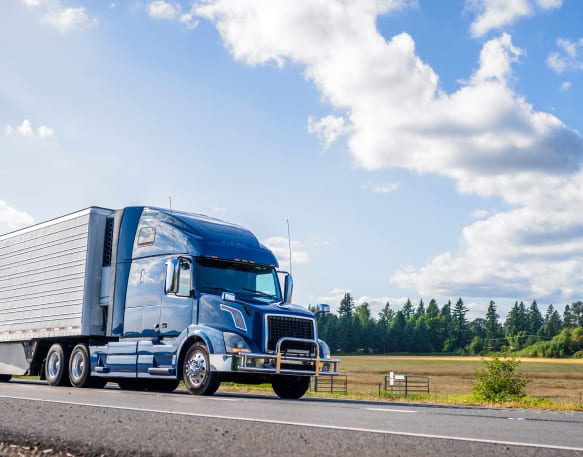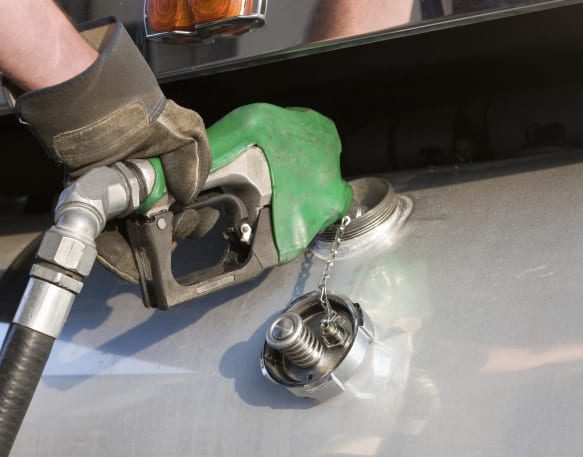As a carrier, your primary goal is to ensure goods move seamlessly from point A to point B. However, a successful trucking operation relies on more than just logistics—it requires robust insurance coverage. While the FMCSA mandates insurance for all carriers, having the right coverage isn’t just about meeting legal requirements; it’s about protecting your business from potentially catastrophic financial losses. Insurance offers peace of mind, safeguarding you against the unexpected, whether it’s a major accident or a costly claim.
Carriers benefit from various types of insurance, but for comprehensive protection, it’s essential to go beyond standard cargo and commercial insurance. Enter errors and omissions insurance (E&O insurance)—a crucial yet often overlooked layer of coverage. E&O insurance shields your business from financial losses tied to unintentional mistakes or oversights in your services. Curious about what errors and omissions insurance covers, its benefits, or even errors and omissions insurance costs? This guide will break down everything you need to know to keep your transportation company protected.
What is errors and omissions insurance?
Errors and omissions insurance is a form of professional liability insurance. An E&O insurance policy protects companies (and their workers) from claims of inadequate work and negligence. Without an E&O policy, you may find yourself spending a huge amount of money.
For example, if your company can’t meet a promised deadline, makes a professional oversight, or makes a material omission, a client can file a lawsuit, which can get very expensive very quickly. Errors and omissions coverage can help cover your legal fees, settlements, and damage expenses.
It’s worth noting that E&O insurance and general liability insurance are not the same. General liability insurance will come in handy if a non-employed visitor on your company’s premises gets injured and submits a claim. On the other hand, errors and omissions insurance will cover you in the event a mistake occurs during your business operations. However, as a carrier, you’ll want to have general and professional liability insurance as well.
What does errors and omissions insurance cover?
Now that you know what errors and omissions insurance is, let’s dive deeper into what this type of insurance policy covers. E&O coverage varies depending on the issuing insurance company, but it generally helps protect your transportation company from claims of omissions, errors or oversights in services, negligence, failure to meet a deadline or deliver a specific promised service, misrepresentation, inaccurate advice, breach of contract, and violation of good faith and fair dealing.
For instance, if a customer sues your business for one of these reasons and you have to go to court, your errors and omissions policy should kick in and help cover attorney fees, court costs, administrative costs, settlements, and judgments. You can usually rely on your errors and omissions insurance to help with various fees and expenses, whether or not your company is found guilty. However, you’ll need to file your errors and omissions insurance claim within your policy period or your extended reporting period and ensure the incident in question occurred on or after your retroactive date to receive the funding.
Which claims does errors and omissions insurance not cover?
Errors and omissions insurance covers a lot of situations, but it doesn’t cover everything. For one, your policy won’t cover claims from events that occurred before your policy’s retroactive date or claims filed after your policy’s extended reporting period. Often, temporary employees won’t fall under errors and omissions coverage, and some policies will only cover claims in certain jurisdictions. It all depends on your insurance provider and specific policy.
It’s also worth noting that errors and omissions insurance doesn’t extend to all types of liability claims. Notably, this type of insurance policy won’t help with claims of bodily injury or property damage caused by your business (that’s why you need general liability insurance for premises-based coverage), illegal acts, and purposeful wrongdoing. Some policies may cover information leaks due to cybercrime, but many don’t.
When it comes to employee claims, you’re generally on your own. For example, most errors and omissions policies won’t cover workplace discrimination or harassment claims filed by employees, as that’s what employment practices liability insurance is for. Additionally, employee injuries and illnesses caused by their work won’t be covered by your errors and omissions insurance. Instead, you’ll need a workers’ compensation employee policy.
Why do drivers need errors and omissions insurance?
Errors and omissions insurance is a must for any carrier’s peace of mind. Without it, you’re leaving your business vulnerable and could end up paying thousands of dollars out of pocket every time a client sues you, even if they eventually drop their claim.
Hiring lawyers, paying court fees, and settling claims gets expensive quickly, so you may even have to close your business if you don’t have an errors and omissions policy. You’ll need a pile of cash at the ready, just in case, and it still might not be enough to prevent your business from going bankrupt after a single claim. On the other hand, having errors and omissions coverage means regularly paying your insurance provider but can help your company avoid a sudden and substantial financial hit down the road.
How much does errors and omissions insurance cost?
Unfortunately, it’s difficult to provide a specific number regarding errors and omissions insurance costs since every business is unique. So, your errors and omissions insurance price will reflect your company’s specific needs.
Factors that might affect your errors and omissions insurance cost include:
- Claims history: If clients have previously made claims against your business, chances are you’ll have to pay more for your errors and omissions insurance coverage. Companies with previous litigation problems are a higher risk for insurance providers, meaning they’ll need to raise their prices accordingly.
- Location: You’ll likely have higher insurance rates if you operate in a busy city. However, if you operate in a lower-cost-of-living area, you may pay less for your insurance.
- Coverage limits: If you want more coverage and higher policy limits, you’ll need to pay higher insurance premiums.
- Company size: Having a larger business can be a sign of success, but it might also signify increased risk to insurance providers. After all, more employees and more clients means more chances for things to go wrong.
While many of these factors are outside of your control, if you’re on a tight budget, there are a few things you can control to keep your errors and omissions insurance cost as low as possible. First, you’ll want to train your employees. This will help avoid situations where you’d need to use E&O insurance in the first place. You’ll also want to check your contracting system for quality control and regularly check in with customers to ensure they’re satisfied with your services. By being proactive and checking in with customers, you can nip many issues in the bud and avoid drawn-out, expensive legal proceedings altogether.
Regardless of what you end up paying for your errors and omissions insurance, you can rest assured that your money is well spent. After all, paying your insurance premium is more than worth it when you think about how much a single mistake could cost your business without it.
How to choose errors and omissions insurance: Tips for drivers
When selecting errors and omissions insurance, it’s essential to find coverage that suits your unique needs as a driver or carrier. Here are some tips to guide you:
- Assess your risks: Identify the specific areas of your operations where mistakes or oversights could lead to financial loss. This helps you determine the level of coverage you need.
- Compare policies: Not all errors and omissions insurance policies are created equal. Look for coverage options tailored to the transportation industry and compare the details, including limits and exclusions.
- Understand coverage limits: Ensure the policy offers sufficient protection to cover potential claims, including legal fees and settlements.
- Check for industry-specific features: Some insurers offer errors and omissions policies designed specifically for trucking and freight carriers. These may include specialized protections for contract disputes or service errors.
- Consider the cost: Compare errors and omissions insurance costs from different providers, but don’t base your decision on price alone. Look for a balance between affordability and comprehensive coverage.
- Review provider reputation: Work with an insurance provider with a strong track record and experience in the transportation industry. Check reviews and ask for recommendations.
- Read the fine print: Carefully review the policy terms to understand what is and isn’t covered. Pay close attention to exclusions and deductible amounts.
- Work with an expert: Consulting an insurance broker or industry expert can help you navigate the complexities of errors and omissions insurance and find the right policy for your business.
Where can drivers find E&O insurance?
Finding the right errors and omissions insurance policy for your business can be a challenge, with so many providers and plans to choose from. That’s why DAT partners with Marquee Insurance Group (MIG), a trusted agency that connects businesses with the best insurance carriers to meet their needs. Whether you’re looking for coverage options like commercial auto liability, motor truck cargo, or physical damage, MIG can help you navigate the process and find tailored solutions that fit your business perfectly.
With 24/7 client portal access, expert support, and specialists who know the ins and outs of the ever-changing transportation industry, Marquee Insurance Group goes above and beyond for carriers.
Protect your transportation business with errors and omissions insurance
Errors and omissions insurance is a vital safeguard for carriers, protecting against financial losses stemming from unintentional mistakes or oversights in your operations. Beyond legal compliance, it provides peace of mind and ensures your business remains resilient in the face of unexpected claims. By understanding what errors and omissions insurance covers, its costs, and how to choose the right policy, carriers can confidently secure their operations and focus on delivering exceptional service while minimizing financial risks.
Marquee Insurance Group: Your trusted E&O insurance partner
When it comes to your transportation business, you can’t take any chances. One disgruntled client could lead to financial ruin if you don’t have errors and omissions insurance in place. Luckily, DAT’s trusted commercial trucking insurance partner, Marquee Insurance Group, is ready to help.
MIG works with over 50 A-rated insurance companies and can provide a customized coverage plan that meets your business’s unique needs. Unlike many other insurance providers, Marquee Insurance Group takes a transparent approach to insurance and specializes in the trucking industry and all its complexities. Find out what Marquee Insurance Group can do for your business today!




